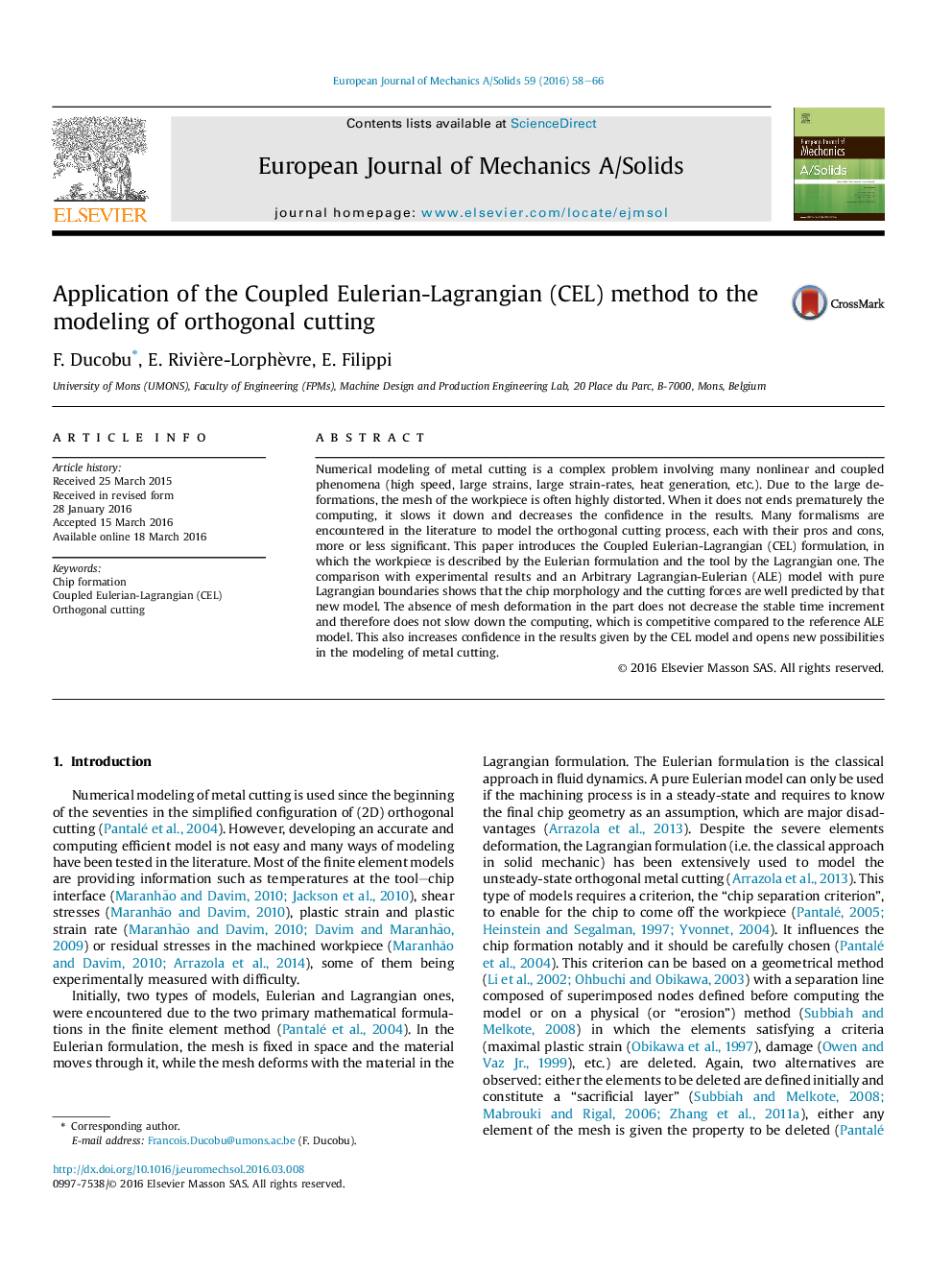| کد مقاله | کد نشریه | سال انتشار | مقاله انگلیسی | نسخه تمام متن |
|---|---|---|---|---|
| 774600 | 1463188 | 2016 | 9 صفحه PDF | دانلود رایگان |

• The Coupled Eulerian-Lagrangian (CEL) method is applied to orthogonal cutting.
• There is no mesh deformation in the Eulerian workpiece.
• The results are close to the experiments and a reference ALE model.
• The CEL chip seems more “natural” than the ALE one at small depth of cut.
• The CEL formulation should be expanded to other cutting conditions.
Numerical modeling of metal cutting is a complex problem involving many nonlinear and coupled phenomena (high speed, large strains, large strain-rates, heat generation, etc.). Due to the large deformations, the mesh of the workpiece is often highly distorted. When it does not ends prematurely the computing, it slows it down and decreases the confidence in the results. Many formalisms are encountered in the literature to model the orthogonal cutting process, each with their pros and cons, more or less significant. This paper introduces the Coupled Eulerian-Lagrangian (CEL) formulation, in which the workpiece is described by the Eulerian formulation and the tool by the Lagrangian one. The comparison with experimental results and an Arbitrary Lagrangian-Eulerian (ALE) model with pure Lagrangian boundaries shows that the chip morphology and the cutting forces are well predicted by that new model. The absence of mesh deformation in the part does not decrease the stable time increment and therefore does not slow down the computing, which is competitive compared to the reference ALE model. This also increases confidence in the results given by the CEL model and opens new possibilities in the modeling of metal cutting.
Journal: European Journal of Mechanics - A/Solids - Volume 59, September–October 2016, Pages 58–66